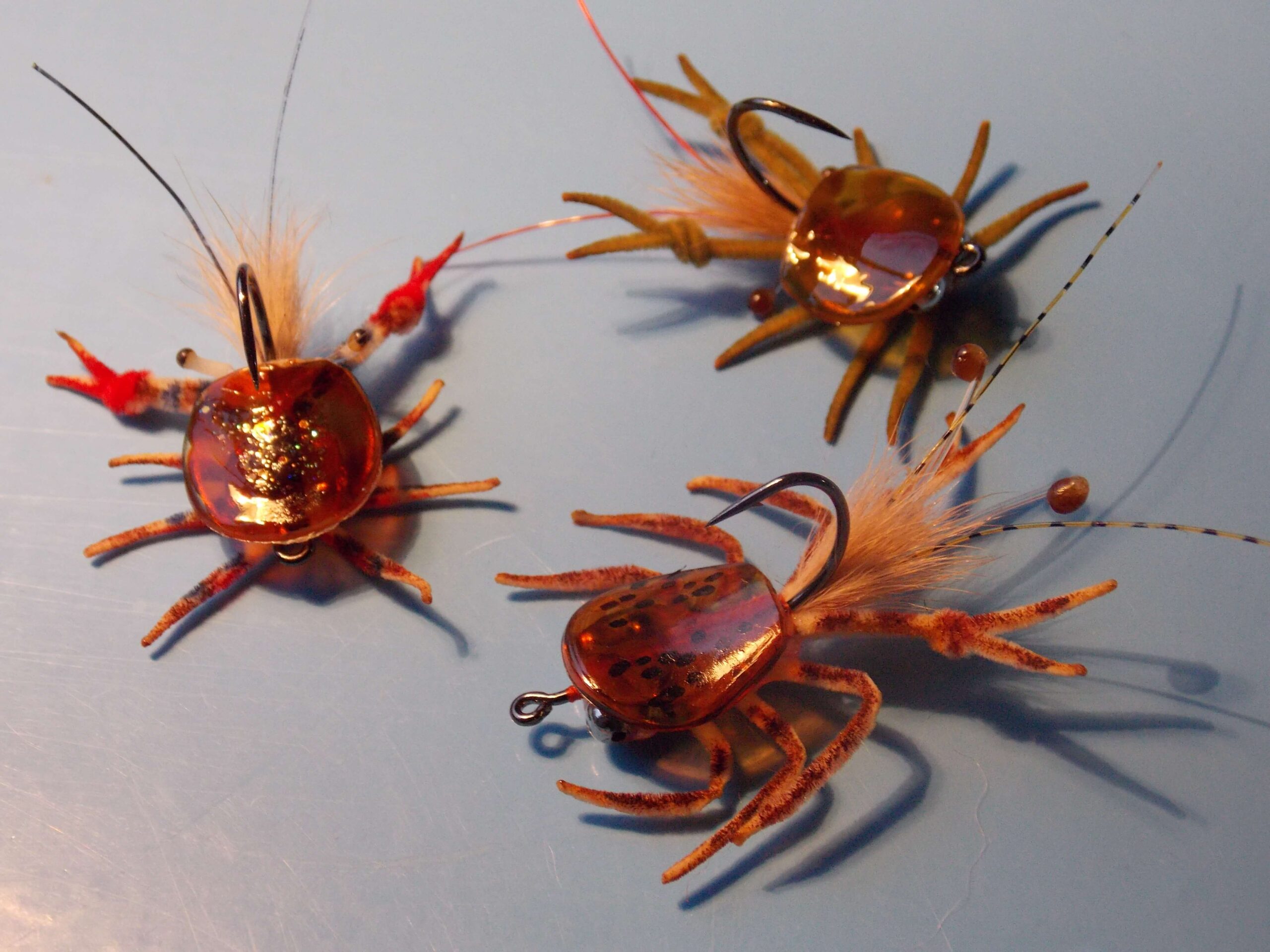Ruben Martin is a fly fishing guru from Argentina who shared one of his exquisite crab patterns for permit with us. It’s a great pattern and although it looks complicated, it’s not a difficult pattern to tie. Give it a try and email us with any questions.

 Material list:
Material list:
Hook: AHREX NS 122 Light Stinger or NS 172 Curved Gammarus.
Thread: UNI 8/0 o Veevus 8/0
Weight: bead chains
Antennas: 0X monofilament
Rostrum: Rabbit hair
Eyes: Monofilament or similar
Claws and legs: ultra chenille
Shell: Hard plastic material curved
——————————————
 Step 1 : Tie in pair of bead chain eyes.
Step 1 : Tie in pair of bead chain eyes.
 Step 2: Tie in a second pair of bead chain eyes.
Step 2: Tie in a second pair of bead chain eyes.
 Step 3: Attach two pieces of monofilament as antennas, and paint it with permanent marker of brown color with black dots. This step can be skipped if you don’t want antennas.
Step 3: Attach two pieces of monofilament as antennas, and paint it with permanent marker of brown color with black dots. This step can be skipped if you don’t want antennas.
 Step 4: Tie in a small tuft of tan colored rabbit hair.
Step 4: Tie in a small tuft of tan colored rabbit hair.
 Step 5 :Make two monofilament eyes, burning the tip with a lighter.
Step 5 :Make two monofilament eyes, burning the tip with a lighter.
 Step 6: Cut off excess monofilament and secure with thread wraps.
Step 6: Cut off excess monofilament and secure with thread wraps.
 Step 7: With a piece of Ultra Chenille build the claws, for this we only have to take the Chenille and make a simple knot, then we cut the desired length. Then, carefully burn the tips with a lighter.
Step 7: With a piece of Ultra Chenille build the claws, for this we only have to take the Chenille and make a simple knot, then we cut the desired length. Then, carefully burn the tips with a lighter.
 Step 8: Prepare a little quick-drying epoxy glue ( I use Poxipol because it has the ability to remain in place because of its consistency).
Step 8: Prepare a little quick-drying epoxy glue ( I use Poxipol because it has the ability to remain in place because of its consistency).
 Step 9: With the same Vernille or Ultra Chenille of tan color, prepare the legs, cutting six small pieces and burning a tip of each piece with the lighter.
Step 9: With the same Vernille or Ultra Chenille of tan color, prepare the legs, cutting six small pieces and burning a tip of each piece with the lighter.
 Step 10: Put glue on the bottom of the hook.
Step 10: Put glue on the bottom of the hook.
 Step 11: Add the shell- a small piece of semi-curvoid plastic that shaped with scissors. I use plastic spangles that are available in craft houses.
Step 11: Add the shell- a small piece of semi-curvoid plastic that shaped with scissors. I use plastic spangles that are available in craft houses.
 Step 12: Once the glue is dry and the parts are affixed, paint the shell and the top parts of the claws and paws.
Step 12: Once the glue is dry and the parts are affixed, paint the shell and the top parts of the claws and paws.
 Step 13: On the bottom, paint the glue with some glaze or lacquer with glitter.
Step 13: On the bottom, paint the glue with some glaze or lacquer with glitter.
 Materials used, Lacquers and permanent markers used to color the imitation.
Materials used, Lacquers and permanent markers used to color the imitation.


